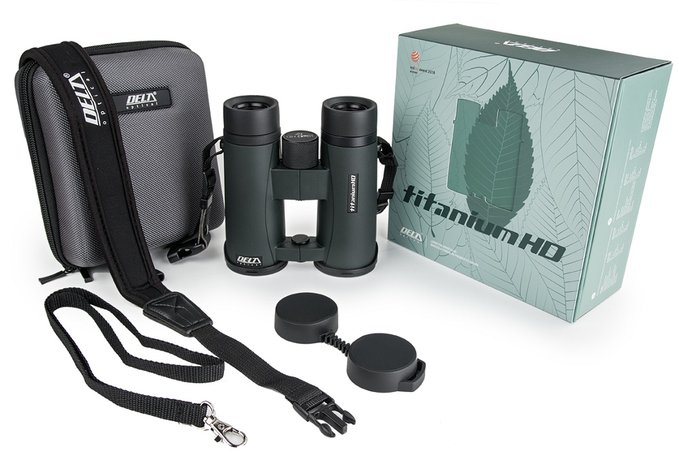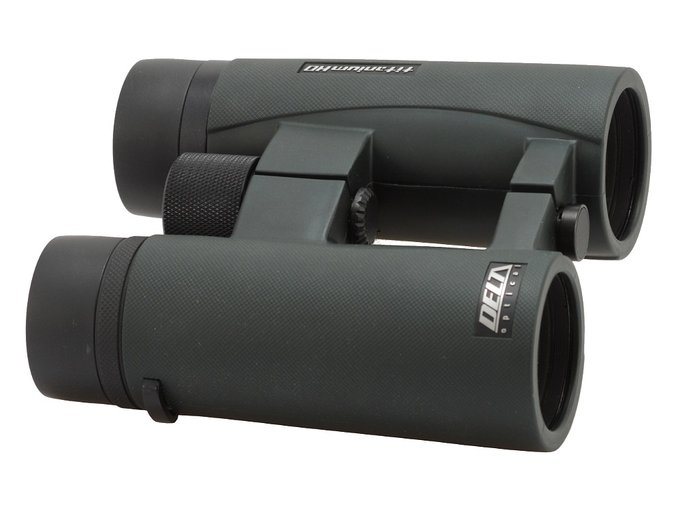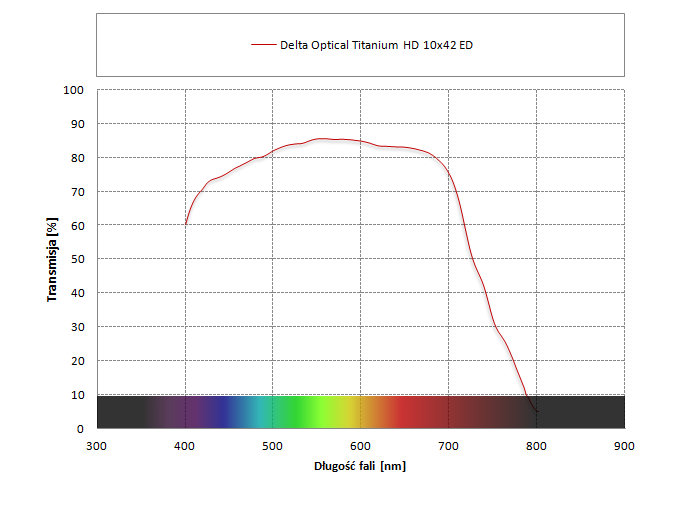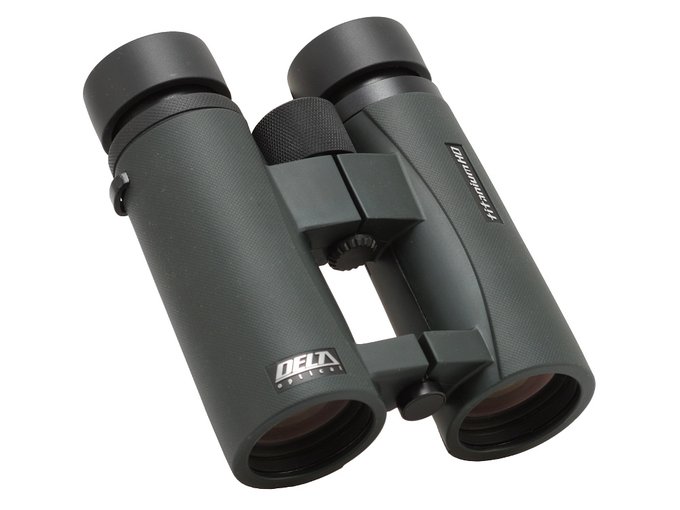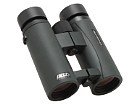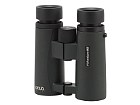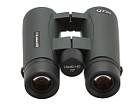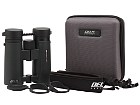| Real front lens diameter |
Left: 41.96+/-
0.05 mm
Right: 41.97+/-
0.05 mm
|
8 / 8.0 pkt |
| Real magnification |
9.9+/-
0.05x
|
3/3.0 |
| Transmission |
84.7+/-
1%
|
12/25.0 |
| Chromatic aberration |
Excellent correction in the centre, good on the edge. |
9/10.0 |
| Astigmatism |
Slight. |
7.6/10.0 |
| Distortion |
Distance of the first curved line from the field centre compared to the field of view radius: 63% ± 4%
|
7/10.0 |
| Coma |
Starts near 70% from the field centre and is between high and medium values on the edge. |
6.2/10.0 |
| Blurring at the edge of the FOV |
The blur occurs in a distance of 62% +/- 4% from the field of view centre. |
1/10.0 |
| Darkening at the edge the FOV |
Distinct. |
2.7/5.0 |
| Whiteness of the image |
Noticeable loss of purple and blue light so images have a slightly yellow-green hue. |
3.8/5.0 |
| Collimation |
Perfect. |
5/5.0 |
| Internal reflections |
| Left: |
Right:
|
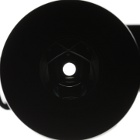 |
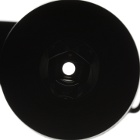 |
Nice. |
4/5.0 |
| Housing |
Quite shapely 'open hinge' design padded with greenish rubber of delicate texture. Sticks to your hands pretty well. Nothing creaks, nothing sticks out. The rubber can be pulled away slightly near the objectives. Rubberized eyecups with 3 detention stops. Produced in China. |
7.5/8.0 |
| Focusing |
Ordinarily sized, slightly ribbed central wheel. It moves quite heavy, with changeable resistance. The full turn amounts to just 325 degrees. Dioptre correction in the right eyepiece performs as it should but it move the outer element. |
4/5.0 |
| Tripod |
Available between tubes of the binoculars. |
3/3.0 |
| Interpupilary distance |
from 57.7 to 78mm
|
5/6.0 |
| Closest focusing distance |
1.60 meters. |
2/2.0 |
| Eyepieces FOV |
Apparent field of view of 69.4 deg (according to simple formula) and 62.5 deg (according to tangent formula). |
15.5/20.0 |
| Field of view |
Measured by us amounted to 7.01 +/- 0.03 degrees and was in perfect accordance with the value from official specifications. A very large field for this class of equipment. |
8/8.0 |
| Quality of the interior of the barrels |
Interior of the tubes dark, matted and ribbed. Bottom is dark, so are areas around the prisms. A bit of dark gule on the sides. Very clean inside. |
4.5/5.0 |
| Vignetting |
| Left: |
Right:
|
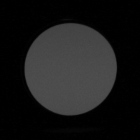 |
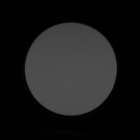 |
OL: 0.94%, OR: 0.75% |
7/8.0 |
| Prisms quality |
Good quality BaK-4. |
8/8.0 |
| Antireflection coatings |
Purple-yellow on objectives and eyepieces. Unfortunately the prisms are distinctly shiny as if not all surface were completely coated. Overall medium intensity of coatings. |
3.8/5.0 |
| Warranty [years] |
10 |
4.5/6.0 |
| Final result |
74.8%
|
142.1 / 190 pkt
|
| Econo result |
|
0pkt. |
Summary
Pros:
- solid casing,
- huge field of view,
- excellent correction of chromatic aberration,
- slight astigmatism,
- moderate distortion,
- sensible colour rendition,
- nice appearance of areas near exit pupils,
- proper blackening and cleanliness inside tubes,
- good quality prisms made of BaK-4 glass,
- sharp images already from 1.6 metres.
Cons:
- a bit too low transmission,
- huge drop of sharpness on the edge of the field of view.
First, let us deal with perhaps the most important thing. When Delta announced their new pairs of binoculars I didn't believe the 10x42 model would really feature a field of view of 7.0 degrees. I was quite sure it was just a marketing trick, a bait to entice more customers. I thought that if the real field amounted to 6.7-6.8 degrees it would be still an excellent result, better than that of most of direct rivals anyway. Our measurements showed that the field is in perfect accordance with official statements and amounts to 7.0 degrees, a record among contemporary 10x42 class binoculars. A round of applause!
Binoculars with eyepiece fields of 70 degrees or wider used to be popular several dozen years ago and the consequences weren't that nice - we mean low resolution on edges of that field, significant distortion, coma, and huge chromatic aberration.
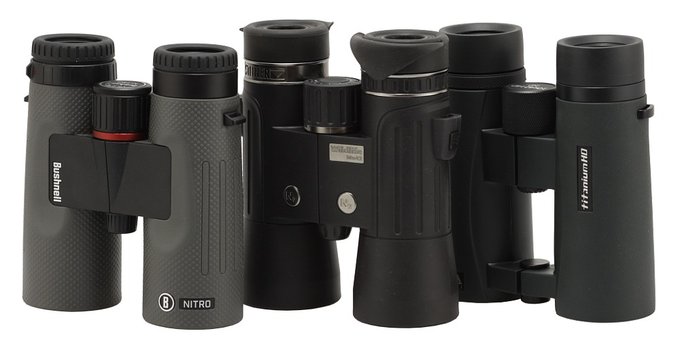
Bushnell Nitro 10x42, Steiner Wildlife 10x42 and Delta Optical Titanium HD 10x42 ED. |
The new Delta managed to wriggle its way out of that tight corner. It's true the edges of the field are fuzzy and it should be considered a serious flaw; you can also notice distinct brightness loss on the edge but, fortunately, ED glass performs as it should so chromatic aberration is corrected very well across the field and you don't deal with any noticeable coma and distortion problems. In this area the new Titanium HD compares favourably with older wide-anlge devices.
I also appreciate Delta's attention to detail when it comes to the new model. The casing seems to be very solid, waterproof, ergonomic, perfectly blackened, and clean inside. The producer thought about comfort of customers who need wider interpupilary distance (up to 78 mm). What's more, the binoculars' minimum focusing distance is 1.60 meters.
The producer boast of high quality antireflection and silver coatings on the prisms which might suggest high transmission level. Unfortunately the reality proves to be far from perfect. One glance at the prisms and you see many intensive reflections; perhaps they didn't use coatings of the best quality and, as a result, you get transmssion like the one showed below.
Such a graph befits roof prism models with price tags lower than 200-250 Euro. An instrument costing two times more should have had maximum results ranging from 88 to 90% and here you simply won't get them.
To sum up, with a record-breaking field of view, amounting to 7 degrees, I am hardly concerned about that huge sharpness loss on the edge. I've always been a fan of old pairs of binoculars with very wide fields of view; somehow fuzzy ends of the field never bothered me that much. I suppose the comfort of looking through such wide eyepieces made up for any flaws. In the case of the new Delta the situation is better because chromatic aberration is corrected very well and the same can be said about distortion and coma. As a result images in the centre of the field are properly contrasted, devoid of noticeable astigmatism.
I consider low transmission to be a more serious issue – at this price point, in the centre of the visible spectrum the results should be closer to 90, not 85%.
Overall new Delta binoculars should be assessed very positively indeed. It's the debut of this producer at this price point and, out of all pairs of Delta binoculars we've tested so far, the new one managed to get the highest score. It is true that the competition in the 42 mm class remains fierce but the new Delta sticks out with its impressive, record field of view. We feel it is a very solid recommendation.

